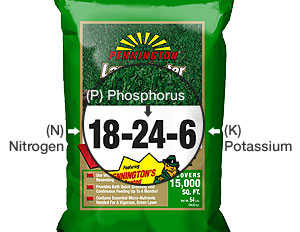 Many of you will have fed your garden and veg plot now only to find that all the nutrients have been washed away in the heavy rains. It’s a tricky business this gardening, knowing when to do what and against the elements. Hence I often leave putting compost or manure on the garden until very early spring. But all the signs of renewed growth are here and your plants will be hungry. Now is a good time to spend money on fertiliser and reap the benefits later in the year.
Many of you will have fed your garden and veg plot now only to find that all the nutrients have been washed away in the heavy rains. It’s a tricky business this gardening, knowing when to do what and against the elements. Hence I often leave putting compost or manure on the garden until very early spring. But all the signs of renewed growth are here and your plants will be hungry. Now is a good time to spend money on fertiliser and reap the benefits later in the year.
Our plants need three main nutrients-nitrogen, potassium and phosphorous and it’s helpful to remember what each of those elements does. Nitrogen helps to produce leaves so it is important for leafy plants, think of spinach and cabbages and all ornamental plants where foliage is the attraction. Potassium is needed by all flowering and fruiting plants and phosphorous encourages root growth and is therefore essential to all plants. These chemical elements are symbolised as NPK and that is the mix you will see on a packet of fertiliser, telling you how much of each element is in the mix and in what proportion.
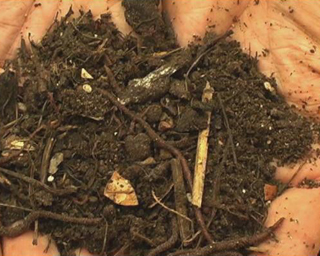 Don’t get too hung up about the need to understand the chemical side of it, just remind yourself what each one does. A bag of something like Growmore will have equal amounts of each so may say N7:P7:K7 or may just say7:7:7, assuming you know the elements therein. This is an equal balance of fertilisers and is ideal for general use and if you do nothing else and you don’t mind using chemical fertiliser ( as opposed to organic) then this is the one for you. Alternatively you could go for special mixes. A rose fertiliser will be high in potassium and suit flowering plants in spring and bone meal is high in phosphorous for when you are planting in the dormant season.
Don’t get too hung up about the need to understand the chemical side of it, just remind yourself what each one does. A bag of something like Growmore will have equal amounts of each so may say N7:P7:K7 or may just say7:7:7, assuming you know the elements therein. This is an equal balance of fertilisers and is ideal for general use and if you do nothing else and you don’t mind using chemical fertiliser ( as opposed to organic) then this is the one for you. Alternatively you could go for special mixes. A rose fertiliser will be high in potassium and suit flowering plants in spring and bone meal is high in phosphorous for when you are planting in the dormant season.
I try not to use too many chemical fertilisers in these special mixes, partly because I try to be as organic as possible and also because I have seen too many accidents. These chemicals have to be applied carefully and in the correct amounts because they are concentrated. Organic fertilisers release their nutrients more slowly so it is actually quite difficult to overdo it. Pelleted chicken manure is great, fresh is better put in the compost heap first to break down. Similarly horse and pig manure (I have plenty of that) need to break down.
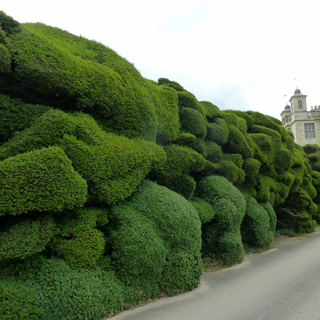 Added to your compost heap these are beneficial to generate a worm and good bug colony and create an aerobic mix. If you cannot make compost and if you have some bare ground for say, six weeks before you plant your runner beans, try growing a crop of green manure. Clover, mustard, lupins or the packet green manure mixes you can buy will make a huge difference. When you need the ground, just cut down the crop and dig it into the soil to recycle the nutrients that the crop has brought up from below. These green manures add the nutrients, retain moisture and improve the soil structure.
Added to your compost heap these are beneficial to generate a worm and good bug colony and create an aerobic mix. If you cannot make compost and if you have some bare ground for say, six weeks before you plant your runner beans, try growing a crop of green manure. Clover, mustard, lupins or the packet green manure mixes you can buy will make a huge difference. When you need the ground, just cut down the crop and dig it into the soil to recycle the nutrients that the crop has brought up from below. These green manures add the nutrients, retain moisture and improve the soil structure.
There are some very time sensitive jobs to do now. If you have a formal hedge like box or yew it could have a gentle trim now. But please be aware that birds are now nesting and serious hedge trimming should stop mid- March and not commence again until early August.
At the end of this month I will put my runner beans in pots in the greenhouse ready to plant out at the end of May once I have hardened them off. Dwarf French beans, which are expensive in the shops, are well worth growing. But they hate cold feet. If you put them out as plants too early their growth will be checked and they will take weeks to get going or if you sow them too soon they will refuse to budge. Sow them indoors or in the greenhouse, preferably with a little bottom heat, give them plenty of light.
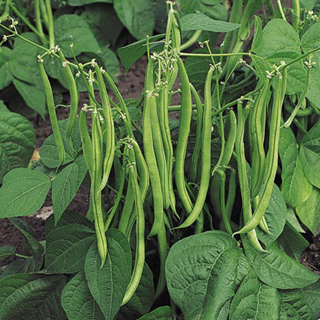 In mid to late May (depending on the weather), just put them out on the soil where they’re going to grow, let them get used to being outside for a while and then plant into warm soil at the end of May. Leeks can be done in the same way – unless of course you started them early, like me, for a show leek! Peas can be sown much earlier if the soil is warm and if it still has not been warm enough put a layer of polythene of a cloche over the area to be planted. The sun will warm up the soil for all sorts of veg done this way.
In mid to late May (depending on the weather), just put them out on the soil where they’re going to grow, let them get used to being outside for a while and then plant into warm soil at the end of May. Leeks can be done in the same way – unless of course you started them early, like me, for a show leek! Peas can be sown much earlier if the soil is warm and if it still has not been warm enough put a layer of polythene of a cloche over the area to be planted. The sun will warm up the soil for all sorts of veg done this way.
But if you choose to use polythene make sure it is well pegged down or it will end up on the Lizard fairly quickly. I think I may have mentioned before that if you don’t know if your soil is warm enough then the traditional way is to take off your trousers and put your bare bottom on the soil. If you can take it so can the veg!
This is also the month to start growing that pumpkin for the show. Choose your variety carefully; some of them are not bred to be huge. If you want a big one then choose a variety like Atlantic Giant. Sow one seed in a 4” pot in clean compost and give it 20 degrees of heat. Then plant it on into a bigger pot before hardening off as before and then planting into the ground at end May when all chance of frost has gone. Pumpkins are huge feeders. One of our show champions, Trevor, plants his in the compost heap and lets it do its own thing.
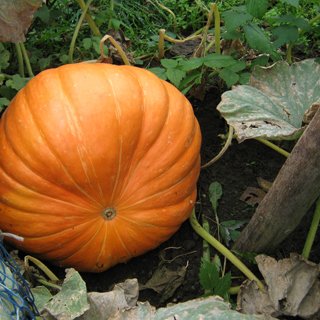 I have an old bath that I shall put mine into with compost from the heap. Whatever you do remember this is a huge plant and will need loads of space, food and water. I regret I cannot tell you what I feed mine on as this would spoil my chances of presenting the largest! Once the pumpkins start forming choose two of the best and don’t let any more appear. If they do, take them off so that all the strength goes into the biggest two and then you can choose which one (or both!) may enter the show. You may need to ring your local famer for tractor transport to get it there!!(I wish).
I have an old bath that I shall put mine into with compost from the heap. Whatever you do remember this is a huge plant and will need loads of space, food and water. I regret I cannot tell you what I feed mine on as this would spoil my chances of presenting the largest! Once the pumpkins start forming choose two of the best and don’t let any more appear. If they do, take them off so that all the strength goes into the biggest two and then you can choose which one (or both!) may enter the show. You may need to ring your local famer for tractor transport to get it there!!(I wish).
As the month progresses you can really get going sowing vegetables outside, spinach, carrots, turnips, radishes, kohl rabi, lettuces, spring onion, summer cabbages and cauliflowers. Remember to sow those that are expensive in the shops. And think about Christmas, yes Christmas! If you want big cauliflowers, savoy cabbages and sprouts for the Christmas dinner table, sow the seeds now. Transplant all green veg when the plants are still young and before the stems go woody, otherwise they will not transplant well.
And if you still have time on your hands, scarify the lawn to get rid of dead thatch and moss, keep weeding and scatter some hardy perennial flower seed randomly in the bare patches border. Chances are they will come up year after year and give endless colour. If you need to prune an ornamental cherry tree to shape do it now, as soon as it’s finished flowering. This will avoid disease such as silver leaf. Also remember the rule if it flowers before June prune as soon as it has finished flowering. So prune camellias or forsythia as soon as the flowers drop so you don’t damage the formation of next year’s buds.
No humour or gossip, this month and next are a serious business in your garden!

